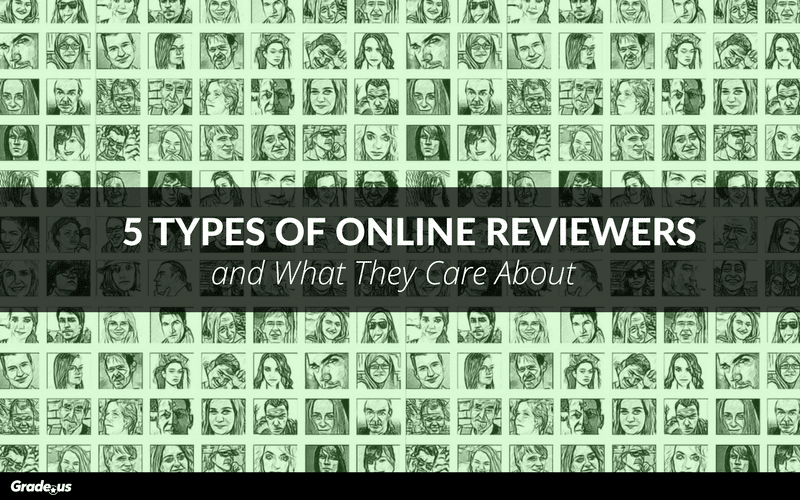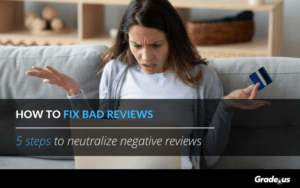“People hate us on Yelp.”
Botto bistro, an Italian pizza and pasta restaurant in San Francisco wants one star reviews. In fact, they’re doing everything they can to get terrible reviews, offering customers 25% off to write scathing one star reviews on Yelp.
They launched a “Hate Us on Yelp” to get the word out.
Then they took their petty bribery even further.
“At the end of the month we will share the most funny and sarcastic review with the 10,000 followers in our newsletter and we will reward the winner with a free ticket for one of our cooking classes!”
Their customers ate it up, posting hilarious one star, tongue-in-cheek reviews.
Co-owner, Davide Cerretini initially used this strategy as a way to fight back against Yelp.
He got tired of Yelp’s sales reps.
The constant cold calls, pitches week after week asking, no, demanding that he purchase ads on the site. He felt Yelp relied on blackmail, shaking down businesses to increase their revenue. But customers loved his “Hate Us on Yelp” campaign, going out of their way to give Botto Bistro the one star reviews they wanted.
These “anti-Yelp” campaigns can be extremely effective, but they can also backfire horribly. Skirting a 3rd party’s TOS comes with consequences (blacklists, blowback, negative reviews, etc.). Yelp isn’t happy Botto gamed their system which means, at some point, there’s a price to pay.
Most of the time unhappy reviewers aren’t as “kind”
The vast majority of reviews are focused around a negative event. Failure, disappointment, anger – typically these are the emotions that drive customers to leave a spontaneous review. Especially when they feel they haven’t been heard.
And then there’s concurrence.
Concurrence refers to the factual, well-thought-out reviews that cite sources and share references. These reviews are free from the usual toxicity that’s present in a negative rant.
Reviews send important signals.
These signals tell you which reviewers you should respond to, when you should respond and how. This is the part where things get dicey.
Why?
Because most businesses do their best to ignore the signals.
Reviewers aren’t created equal
Most of the time, customers are reasonable, thoughtful people. They realize businesses are run by people and they do their best to treat others the way they like to be treated. They’re honest, fair and kind in their reviews.
Which basically means they behave.
Other customers aren’t as considerate. They can be rude, demanding and difficult to please. These customers are quick to demand refunds, concessions and freebies when they don’t get their way. Some of these customers are downright hostile, spewing vicious, nasty and hateful comments in their reviews.
Here’s the common mistake.
Many businesses give (or try to give) each and every customer the same amount of attention. They go out of their way to do what’s right for their customer. If they’re dealing with a toxic reviewer, they often get sucked into a fight, which is obviously a big no-no.
Then, to make matters worse, they train customers to misbehave. Their fear of bad publicity and negative reviews means they’re more likely to become enablers. A customer shows up, throws a tantrum and misbehaves, expecting the business to provide some kind of reimbursement for their “trouble.” Businesses with a fear of bad publicity jump at the chance to do so, training other customers and repeating the dysfunctional cycle.
Here’s the secret most miss.
Customers should turn your attention.
Their attitude, behavior and approach sends important signals about how they’ll behave with you once you engage them. But you need to know who you’re dealing with first before you focus on what you’re dealing with.
You’re dealing with a sadist
You’re dealing with broken, dysfunctional people. But you’re also dealing with kind, intelligent and gracious people who know you’re only human. They’re willing to overlook mistakes as long as they’re one offs.
How do you tell the difference?
You listen.
The vast majority of reviewers self identify, they tell you who they really are.
It isn’t so much about what the complaint is, it’s how they approach you for help with their complaint. The way they approach tells you who you’re dealing with and how to work with them.
So who are we dealing with?
Reviewer #5: Trolls
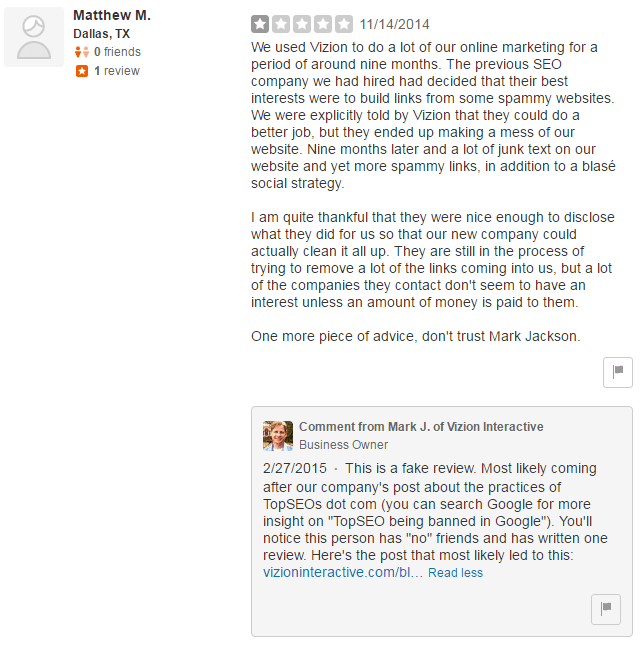
A recent study confirms what many of us have suspected: trolls are horrible people. Researchers confirmed trolls had the dark tetrad of personality traits: narcissism, Machiavellianism, psychopathy and sadism.
But what specifically is an Internet troll?
An Internet troll approaches a conversation with the sole purpose of hurting and upsetting others. Most of the time there is no real purpose behind their comments. They’ll offend, exaggerate and lie to get a rise out of people.
Your negative reaction is their goal.
While this is horrible to deal with, the antidote is simple. Deny them the very thing they want. Go into “monitor mode.” Avoid responding to their specific posts or reviews and continue to monitor the site for relevant or important information from others.
Reviewer #4: Ragers

Sometimes we get it wrong with our customers. Sometimes we don’t make them happy. When that happens, it’s perfectly reasonable for them to be unhappy or even angry with us.
Anger is a feeling. Rage is a set of actions and behaviors.
Ragers display emotionally and verbally violent behavior. They use their words, emotion and tone to spew abuse. These reviewers are punishers. They leave nasty comments and make threats, doing everything they can to turn others against you when they don’t get their way.
Here’s a rager in action. Notice how his behavior produces a result that is the opposite of what he wants.
And what does a rager want?
He wants to punish you.
And he’ll continue to punish you until his behavior has run its course or he’s forced to stop. He’ll use rants, raging, nasty jokes or satire to punish others. So how do you handle this type of reviewer? What’s the best way to approach them and resolve the problem?
You don’t.
Most of the time accusers don’t want to hear what you have to say. If you’re guilty, a rager feels justified in punishing you. If you’re innocent, you’re guilty, so they’re still justified in punishing you. What you say doesn’t matter.
So you go into “monitor mode” looking for specific, relevant or important information from other reviewers. You’re silent as long as he’s raging.
Reviewer #3: The Misguided
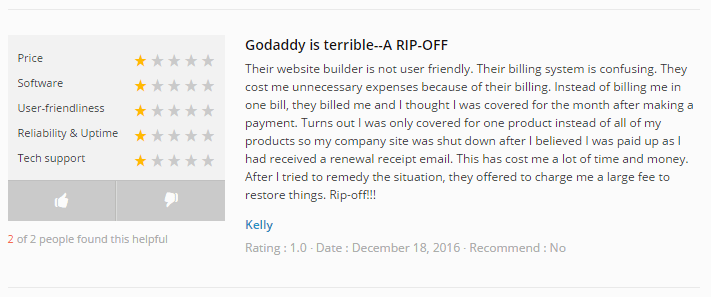
These reviewers are mistaken. Their information may be mixed up, incorrect or completely untrue. If they are mistaken, you have an opportunity.
Most of the time their misunderstanding is genuine. They genuinely believe the falsehoods they’re sharing about you. If they’re wrong, it’s simply about clearing things up, setting the record straight, right?
Not so fast.
Looking at their response, you’ll need to gauge whether they’re open or closed. If they’re open to correction, they’re far more likely to change their mind when presented with solid evidence (i.e. facts). The best way to determine that is to simply feel them out.
So you do just that, you start by sharing the facts.
Gently share the relevant facts of the situation and see how they respond. If they’re open you’ll have a chance to resolve the situation and restore the relationship. If they’re closed, nothing you say will change their mind. You want to respond anyway, sharing the facts of the situation.
Why?
For the lurkers, the silent majority (who are also potential customers) watching how you respond. Your behavior, and the way you craft a response will either validate or falsify the misguided’s words.
Reviewer #2: The Unhappy

These customers have had a negative experience. Maybe they’ve had a really bad experience. Somewhere along the line things went wrong. You dropped the ball, you messed up their order.
These customers are sharing their experience for a variety of reasons.
- A warning for other customers, telling them to stay away. Things went so badly for them that in their minds, there’s no hope for redemption. That doesn’t mean they’re right, but it is how they’re feeling right now. Show them you’re listening, that they’ll be heard. Ask for an opportunity to make it right or show them how you’ve already made it right.
- Offering direction. These customers had a negative experience and they’re talking about it. Some of them had expectations that weren’t met so they’re letting everyone know. Their feedback sounds like an insult at first. Reread their feedback and you’ll see it as the gift that it is. Their thoughts on how you can make your business better. Act on their feedback (if possible) then show them that you did.
- Venting. it’s a coping mechanism that gives customers the ability to rationalize or validate their experience. These customers need to share their feelings to process and release it. The greatest difference you can make for someone who’s venting is to simply listen. Show them you’re listening, then listen until they’re finished. When they’re finished, offer a solution.
- A fixer-upper has a specific solution or resolution in mind. These customers are very sure of what they want and they’re unhappy because they didn’t get it. Most of the time, their expectations are reasonable. Here’s the good news. These customers often know how to fix the problem. Adopt their solution if you can or suggest a reasonable compromise. Do it well and you’re back in their good graces.
Reviewer #1: The Agreeable
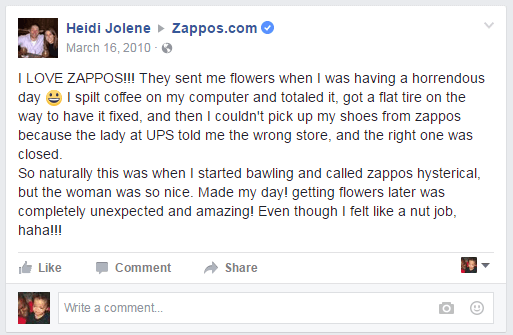
These customers are satisfied. Some may feel you’re simply “adequate” while others believe you went above and beyond the call of duty.
These are the customers who post lukewarm to positive reviews.
Here’s where businesses mess things up. They ignore what they have in front of them and they push for what they want. They don’t see this customer’s review for what it is.
A favor.
A positive review, in a customer’s mind and in reality, is a favor. It’s them putting their personal reputation on the line for you. Going out on a limb to vouch for you personally. These customers see their review as a gift (and it is). Here’s the mistake businesses make.
They ignore that gift and beg for more.

Customers who purchase iPega’s gaming product are hit with.

Do this and you’ll position your business as greedy and ungrateful in that customer’s mind. You’ll irritate them, increasing the odds that you’ll never get another positive review from them ever again.
These customers want graciousness and gratitude. They want you to see their review for what it is.
A gift.
So, what’s the appropriate response?
You express your gratitude, thanking them for their vote of confidence and thoughtful review. Then you shift your focus back to them.
How?
With giving.
What this looks like varies depending on your circumstance. It could be a gift, asking them how you can make things better for them specifically or simply saying thank you so much. The important part is this: you make it about them.
What about the other reviewers?
You know, the rest of the Internet? How do I recognize and motivate other reviewers to share? It’s simple–you ask.
This is the part where most people spam their customers with review requests or they complain “I’m already doing that!” If you’ve asked for reviews, you’ve seen the resistance it creates on customers.
The annoyance it produces.
The subtle change in tone and body language.
Customers don’t really like giving reviews. There’s lots of reasons for that but the biggest reason is this.
They don’t know what to say.
It puts them on the spot, creating an awkward or embarrassing situation they didn’t ask for. Which naturally, makes them pretty angry. If someone’s bungled the request in the past, they’re far less likely give you what you want.
Here’s what you do instead.
You interview them. And you start the interview in your request like this:
Jan,Most of our clients mentioned they were afraid of being neglected. They thought we’d pass their work off to a junior intern once they hired us.
Was that a concern for you?
I’d be interested in your thoughts. Do you have time for a five-minute interview on March 15?
Let me know,
Andrew
See the difference? You’re focusing your customers attention on one specific, easy-to-understand problem. They know exactly what you want and it’s probably pretty easy for them to answer.
These aren’t the only reviewer types
It’s true.
Lurkers, the 80% of your customers who don’t share reviews, are the largest majority of potential reviewers. These customers aren’t particularly motivated to share a review. Asking for their feedback changes that.
If you’ve done a great job and the experience is fairly recent most of these lurkers are open.
But, their willingness fades with time. The longer it takes for you to ask for a review the less likely you are to get it. Customers may still share their thoughts with you but the work it takes to get that review goes up.
Customer reviews aren’t created equal
Reviewer types vary. Customers come with their own set of baggage, dysfunctions, goals and desires.
You know the difference now.
You understand the motivations, the things that drive them. What if you could handle any situation a reviewer throws at you? What if you are able to control the flow of information and meaning, communicating the messages customers need to hear?
Not only is it possible, it’s doable. Create and follow your plan; make the right moves and you’ll have everything you need to attract amazing reviews without the one star drama.
About the Author
Andrew McDermott
Andrew McDermott is the co-founder of HooktoWin. He shows entrepreneurs how to attract and win new customers.

